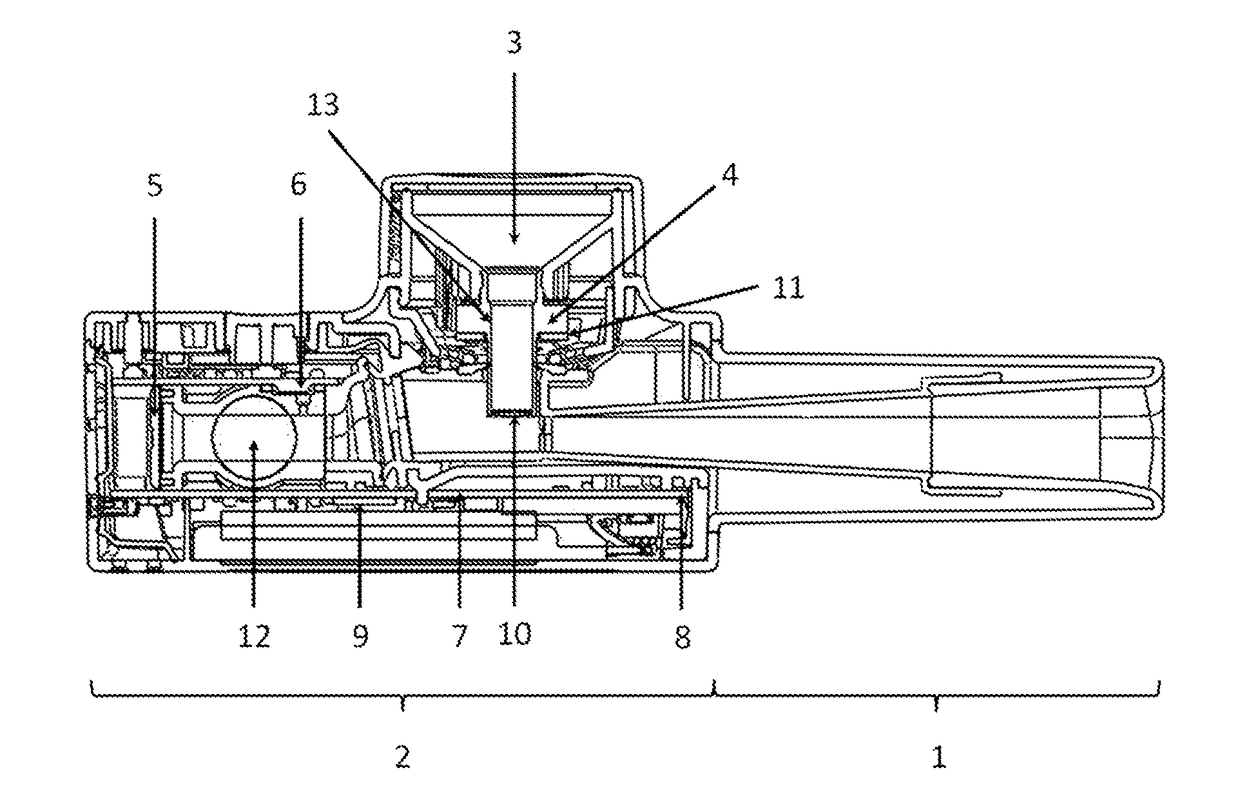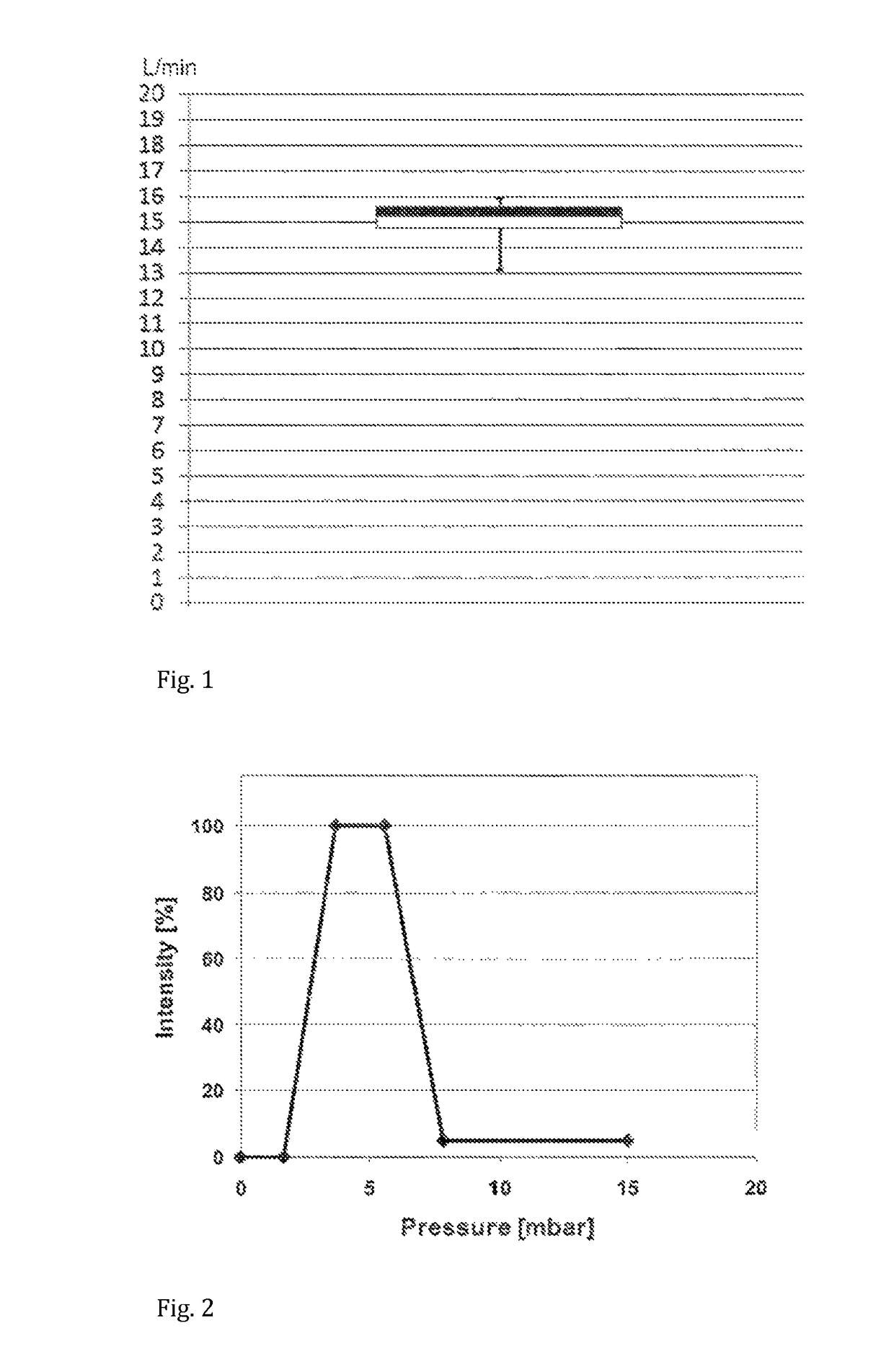Inhalation device with feedback system
a feedback system and inhalation device technology, applied in the field of inhalation, can solve the problems of increasing the likelihood that aerosol particles or droplets impact the throat of a patient rather than the lungs, affecting the specific delivery of aerosols through the inhalation route of administration, and affecting the effect of inhalation manoeuvre, so as to facilitate the immediate correction or adaptation of the inhalation manoeuvr
- Summary
- Abstract
- Description
- Claims
- Application Information
AI Technical Summary
Benefits of technology
Problems solved by technology
Method used
Image
Examples
example 1
[0106]A hand-held nebuliser according to the present invention comprising a vibrating mesh-type aerosol generator, a flow restrictor and a user feedback system was configured and tested as follows. The flow restrictor was responsive to the inspiratory pressure. The inhalation parameter was the inspiratory flow rate, whose target range was set at 15±3 L / min. A pressure sensor was incorporated within the flow channel such as to measure the inspiratory pressure and indirectly determine the inspiratory flow rate. The signalling device comprised light-emitting diodes (LEDs) capable of emitting green light of variable intensity. Two sets of LEDs were incorporated inside the device such as to illuminate the mouthpiece, which itself was made from translucent polypropylene. The feedback system was configured to emit green light to illuminate the mouthpiece with the highest intensity when the inspiratory flow rate is within the target range. This flow rate was determined via a pressure value ...
example 2
[0109]A hand-held nebuliser similar to Example 1 was used to test three different flow restrictors, all of which were responsive to inspiratory pressure. Again, 27 volunteers (21-72 years of age), of which 13 had no previous experience with nebulisers or other inhalers, were asked to perform 5 inhalation manoeuvres using the experimental device, with a short explanation given to the volunteers that they should aim for a green light at maximum intensity and adjust their inhalation accordingly if light intensity decreases.
[0110]FIG. 3 shows the underpressure-flow rate graphs of the three flow restrictors together with the target pressure range from about −2 mbar to about −20 mbar (indicated by the area between the two dotted lines). With all three devices, the flow resistance increases with increasing absolute value of the negative pressure, as indicated by the relatively smaller increase of the corresponding flow rate at high absolute pressure values. The higher the gradient of the c...
PUM
 Login to View More
Login to View More Abstract
Description
Claims
Application Information
 Login to View More
Login to View More - R&D
- Intellectual Property
- Life Sciences
- Materials
- Tech Scout
- Unparalleled Data Quality
- Higher Quality Content
- 60% Fewer Hallucinations
Browse by: Latest US Patents, China's latest patents, Technical Efficacy Thesaurus, Application Domain, Technology Topic, Popular Technical Reports.
© 2025 PatSnap. All rights reserved.Legal|Privacy policy|Modern Slavery Act Transparency Statement|Sitemap|About US| Contact US: help@patsnap.com



